Temperature curves and boost clock rates in detail
The cooler is actually quite nice for its size, because even in the closed case the card usually stays below 70 °C. In the open design it’s a cool 67 °C, but it’s also associated with some noise. The overclocking latitude is very manageable with all Navi cards and I didn’t do it out of respect for my ears and the material. The already between 3 and 4 percent higher performance of the factory OC compared to the reference can hardly be topped with reasonable means.
Later on I will talk about the BIOS and my exchange of ideas with MSI, which finally led to an optional silent BIOS, which you can download from the homepage. This time MSI focused on the durability of the card and especially on the use of the only 23.5 cm long card in smaller ITX systems. The temperatures reached are quite suitable for the place of use.
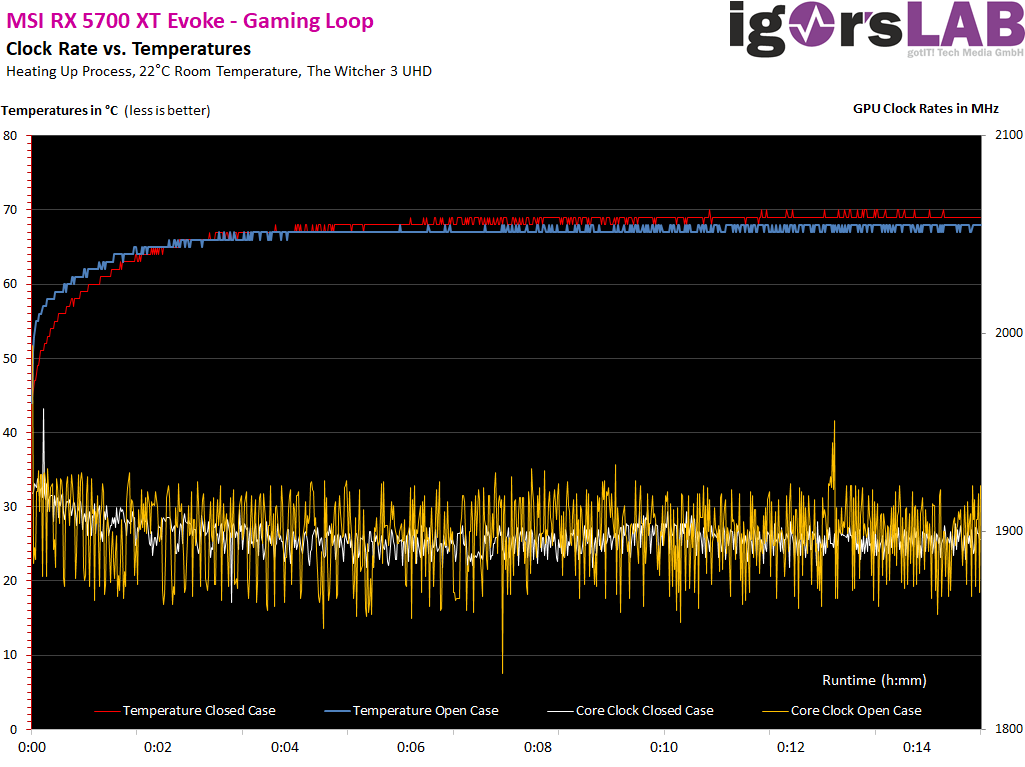
This doesn’t look any different in the stress test, as the waste heat is largely the same as the power consumption is similar to gaming.
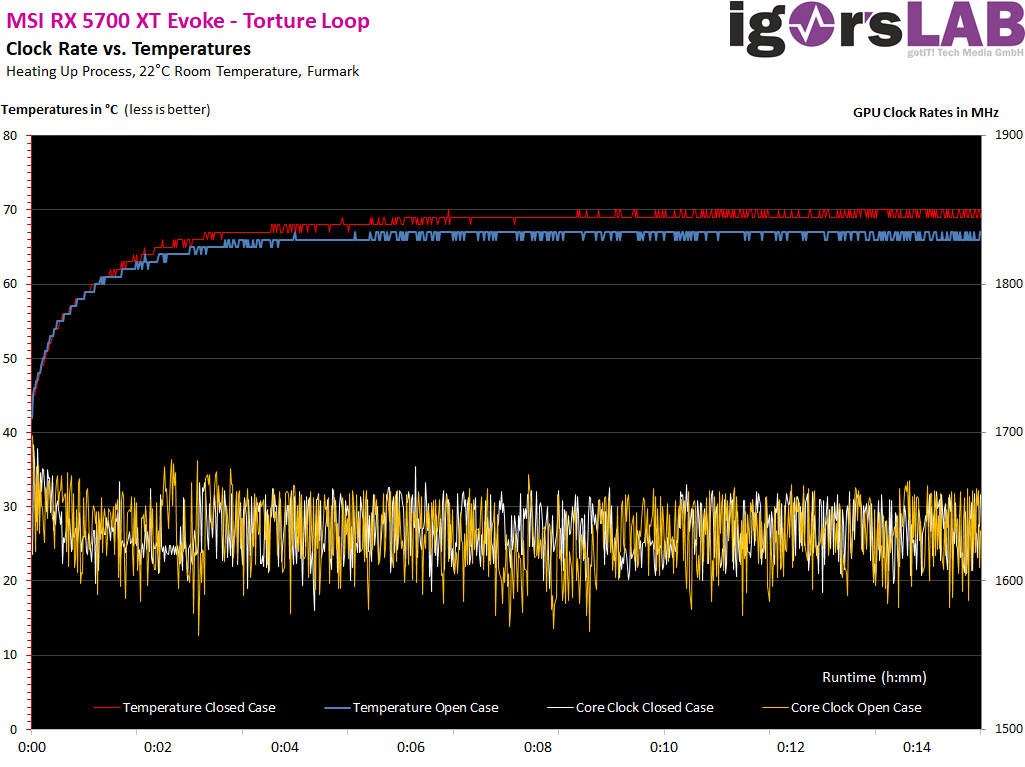
Und nun das Ganze noch einmal in nüchternen Zahlen in Tabellenform, wobei ich die Karte fairerweise mit der größeren GeForce RTX 2080 FE vergleiche:
| Start Values MSI RX 5700 Evoke |
Final values MSI RX 5700 Evoke |
Final values RX 5700 XT Ref. |
|
|---|---|---|---|
| Open Benchtable | |||
| GPU Temperatures |
33 °C | 66 – 67 °C |
85 °C |
| GPU Clock Rate |
1994 MHz | 1888 – 1925 MHz |
<= 1812 MHz |
| Room temperature |
22 °C | 22 °C | 22 °C |
| Closed Case | |||
| GPU Temperatures |
33 °C | 69 – 70 °C |
74-75 °C |
| GPU Clock Rate |
1994 MHz | 1868 – 1912 MHz |
<= 1802 MHz |
| Air temperatues in the Case |
25 °C | 45 °C | 43 °C |
Board Analysis: Infrared Images
The following picture gallery shows all infrared pictures for the gaming loop and the torture loop in open and closed cases. 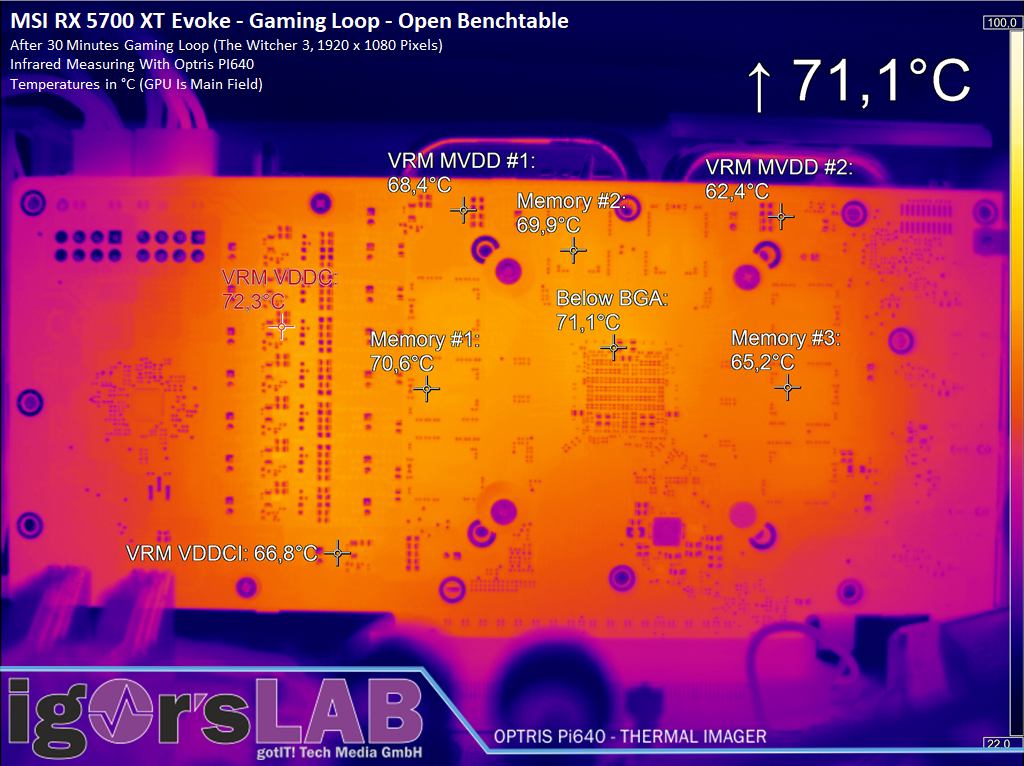
The stress test adds a maximum of 2 degrees.
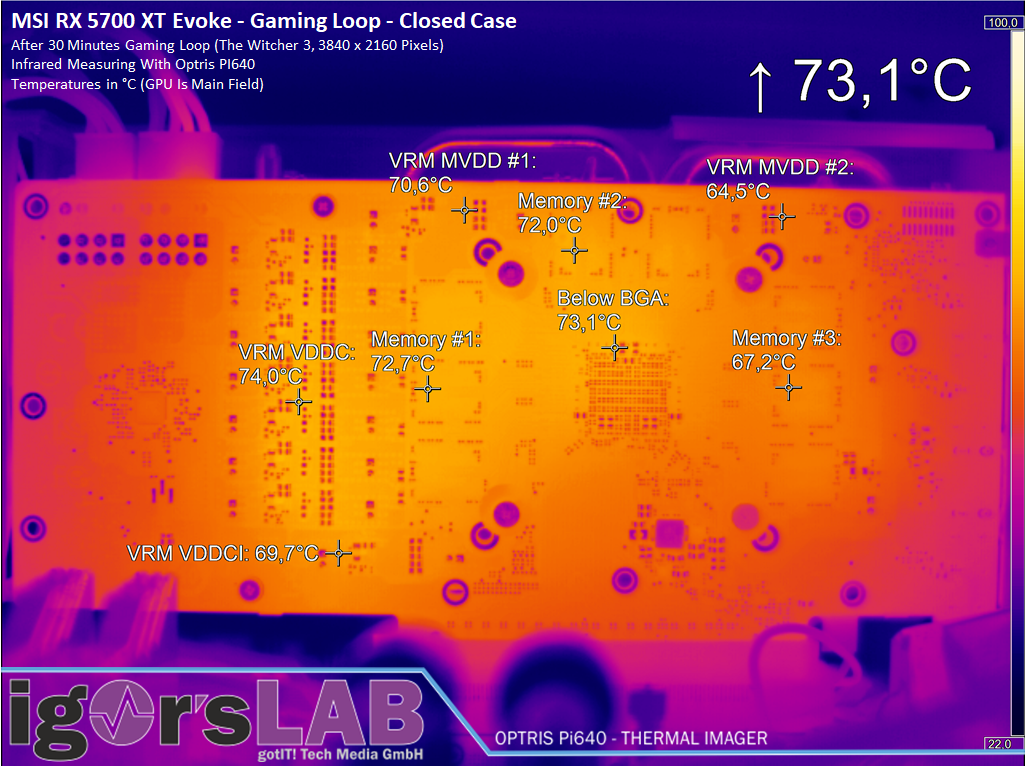
In the closed case it gets a little warmer also during gaming.
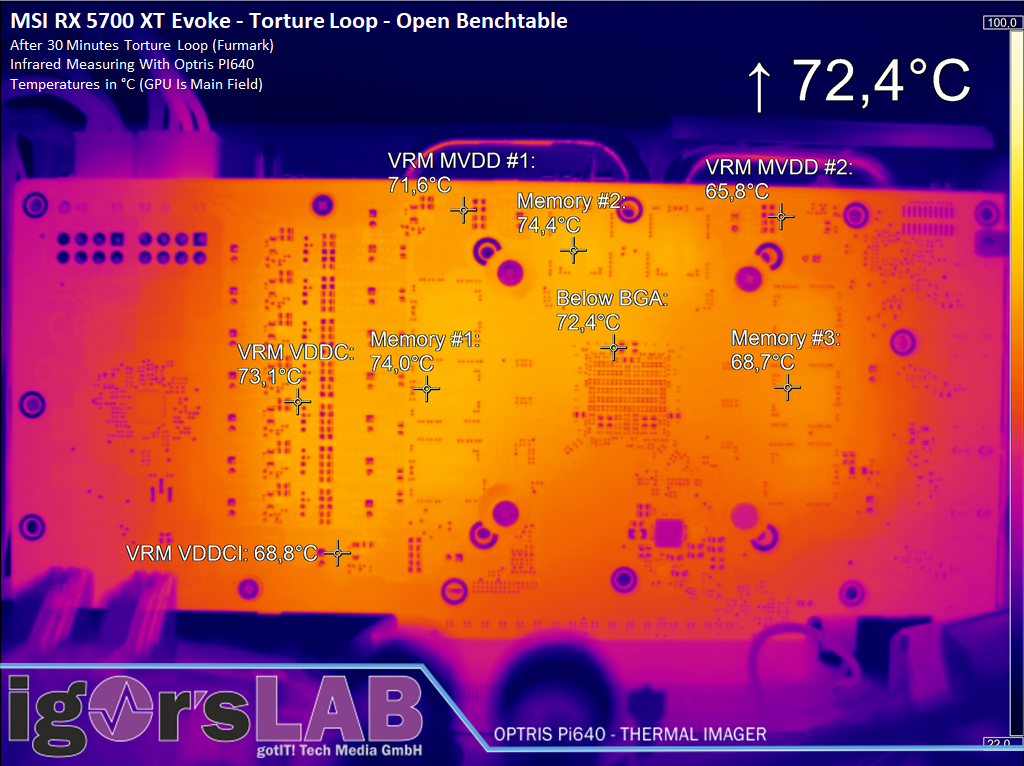
And in the stress test the voltage converters are a little bit hotter again.
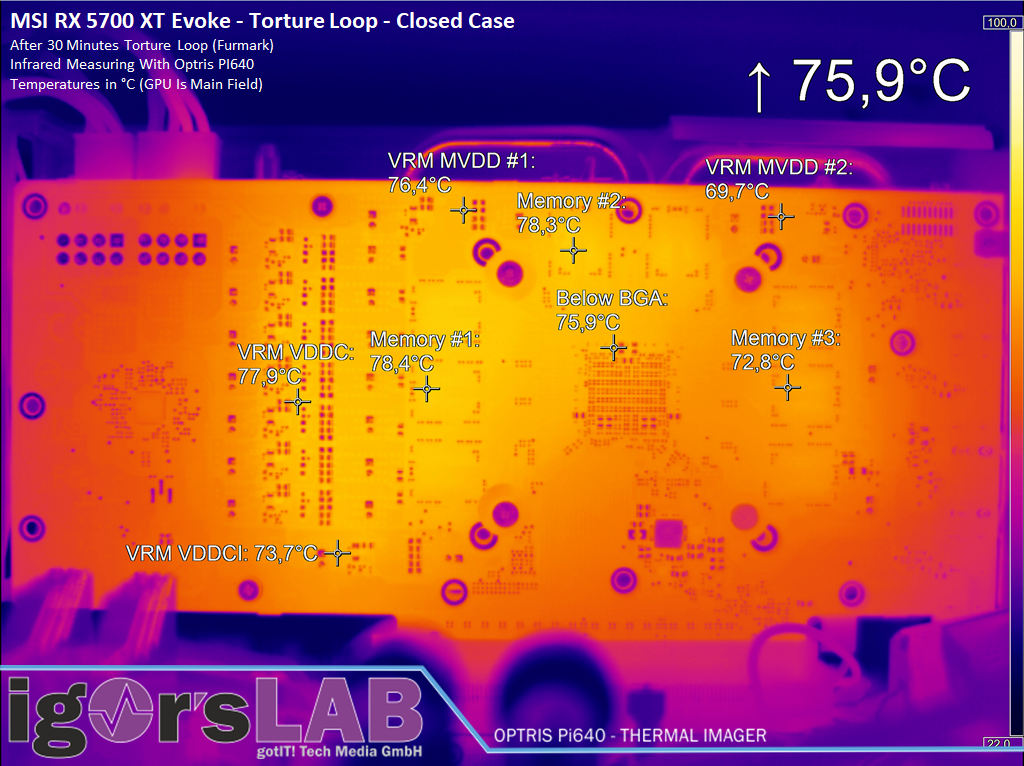
Nevertheless, all this is nothing to think about, because these temperatures are all completely uncritical.
- 1 - Introduction, Technical Data, Test Setup
- 2 - Tear Down: PCB and Cooler
- 3 - Benchmarks 1920 x 1080 Pixels
- 4 - Benchmarks 2560 x 1440 Pixels
- 5 - Benchmarks 3840 x 2160 Pixels
- 6 - Power Consumption in Detail
- 7 - Temperatures, Clock Rate, Infrared
- 8 - Cooling Fans, Noise Emission
- 9 - Conclusion and Bottom Line






























